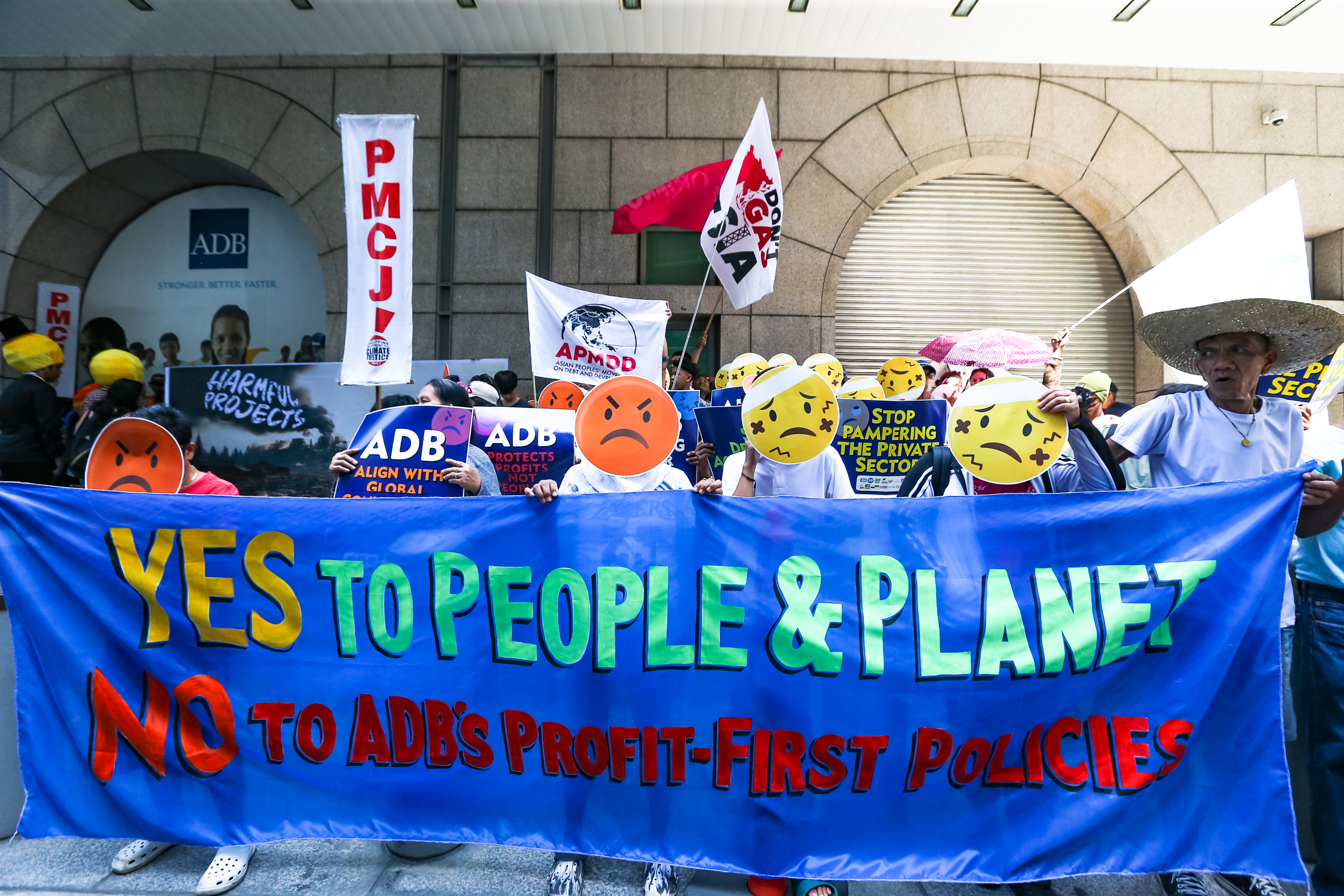- 02.05.2024
- IFIs
- Array
A hot topic at the Asian Development Bank’s (ADB) Annual General Meeting in Tbilisi this week will be the process to update its environmental and social safeguards. The draft new Environmental and Social Framework (ESF), currently in the last few days of consultation, includes a much-anticipated new climate change safeguard. This is welcome and makes the ADB one of the frontrunners amongst Multilateral Development Banks (MDBs). To date, only the European Investment Bank (EIB) has a dedicated climate change safeguard.
The move is in line with the ADB’s attempt to rebrand itself as “Asia and Pacific’s Climate Bank”, which has seen the bank introduce several new climate related initiatives, such as its first Climate Change Action Plan. The ESF also includes several references to climate throughout, making it significantly different to the current Safeguard Policy Statement (SPS) which only included three references to “climate change”, despite being approved in 2009 – the same year as the landmark Copenhagen climate conference.
But for all these promising developments, the new climate safeguard is nowhere near as comprehensive or ambitious as it should be. As the ADB enters the final phase of the review, here are six key ways in which the climate safeguard, and the ESF as a whole, must change:
1. Promote Paris alignment
The draft ESF highlights the ADB’s commitment to align with the Paris Agreement, but it does not spell out how this will happen in practice. This is problematic as the ADB has, to date, not released its Paris Alignment methodology, hence it is impossible to verify its quality. It risks being similar to the Asian Infrastructure Investment Bank’s (AIIB) Paris Alignment methodology that fails to rule out all types of fossil fuels. For the ESF climate commitments to be meaningful, the ADB must make its methodology public and furthermore commit to promoting a rights-based, just transition out of fossil fuels towards sustainable renewable energy options.
2. Increase ambition
In contrast to the EIB, the ADB’s new climate safeguard is far less comprehensive, at only two pages. Overall, the climate-related language lacks rigour and fails to reference best practice. It also fails to present a balanced approach between climate mitigation and adaptation, with the former receiving far more attention. All too often requirements are vague, including on how to assess climate risks in practice. To be meaningful and accountable, exact requirements, targets and measures must be properly spelled out and aligned with best practice.
3. Close fossil fuel loopholes
In its 2021 Energy Policy, the ADB finally banned most forms of investments in coal, but it failed to fully exclude other forms of fossil fuels. The ESF exclusion list should cover this gap by explicitly banning all investments in fossil fuels, including for fossil gas projects, which pose threats to the climate and to the rights of communities where they are located, and so-called ‘captive coal’ for industrial use. To avoid further loopholes it is also important that the ESF applies to all types of investments, both direct and indirect, such as financing through financial intermediaries and technical assistance.
4. Prevent false solutions
The draft ESF allows investments in “lower” carbon energy sources, leaving the door open to funding environmentally and socially harmful projects, as long as they are less carbon intensive than another option. This argument could be used to prioritise gas over coal investments, for example, but this is a false narrative as it distracts from genuinely sustainable options and would lock countries into carbon intensive infrastructure for decades to come. The ESF also encourages carbon offsets, another false solution that can result in enabling harmful projects with impacts that should and can be avoided. It should instead promote genuinely renewable, low or no carbon energy projects that do no harm to people and planet.
5. Promote gender equality
Gender equality is essential for efforts to mitigate and adapt to climate change to be effective. It is therefore disappointing that the draft ESF does not include a gender safeguard. The ADB was a pioneer in terms of introducing a policy on gender back in 1998, but in this case the ADB fails to follow best practice, as set out by the Inter American Development Bank’s (IDB) gender equality safeguard. But the ADB’s gender policy is not referenced at any point, nor is the gender language mainstreamed. Instead, gender related commitments are scattered through the ESF, often in vague terms. The ESF should follow best practice by including a standalone gender safeguard. Failing this, it should at the very least include strong and comprehensive gender language throughout, including in the climate safeguard.
6. Protect Indigenous Peoples
The new safeguard on climate fails to reference Indigenous Peoples at all, while the safeguard on Indigenous Peoples relegates any mention of climate change to an annex, noting that “project risks should include climate change scenarios, when appropriate”. However, Indigenous Peoples’ particular relation to the natural environment, the importance of securing their rights to forests and lands, and vulnerability to climate change impacts should be much more comprehensively considered throughout, including in the climate risk assessment. Importantly, the new ESF should require obtaining Free, Prior and Informed Consent for any project impacting Indigenous Peoples, and should not proceed if this is not secured.
Recourse and partners will be in Tbilisi, 2-5 May, to submit our recommendations to the Asian Development Bank for more robust, effective environmental and social safeguards. Follow our activities on Linkedin or X @RecourseTeam.
Read Recourse’s full submission to the ADB’s ESF review here.
Image: Protest outside the ADB’s main office in Ortigas, Pasig City, Philippines. 25 April 2024. By Leo M. Sabangan II & 350 Pilipinas.
